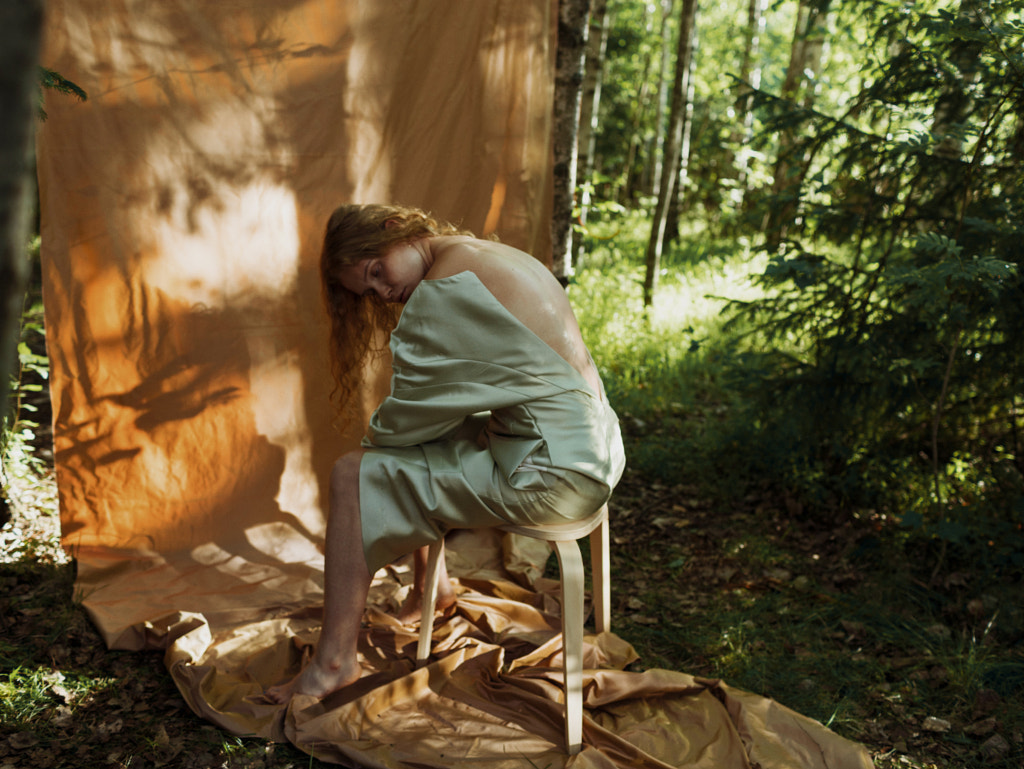A few years after graduating from art school in 1938, Irving Penn traveled to Mexico and the American South to paint. His goal was to become a painter, but he was disappointed with his work and ended up destroying the pieces. After returning to New York, he accepted a job at Vogue, where he would be preparing layouts.
When the magazine’s art director, Alexander Liberman, saw the photos Penn happened to have taken throughout his travels, something unexpected happened. He saw the young artist’s potential and urged him to continue taking photographs. The rest is history, and Irving Penn is remembered today as one of the most influential photographers of the 20th century.
Careers in the arts are often non-linear, with many twists and turns along the way. As an artist and photographer, you might get a “big break” right away, but it’s far more likely you’ll have a series of smaller breaks. Like Penn, you might end up somewhere completely different from where you imagined.
Navigating life after art school can be challenging, as passion collides with the realities of earning a living in a challenging market. School might have taught you everything you need to produce art, but it might not have prepared you for the less glamorous side of life as a working artist—marketing yourself, dealing with clients, negotiating contracts, and following a budget (pro tip: hire an accountant!). Luckily, patience and persistence will carry you a long way. Here are eight simple tips to help you in your journey.
Tip #1: Find a professional community
One of the biggest challenges recent grads face is navigating the business world, from writing invoices to finding clients, but one of the best ways to learn is by connecting with people in the industry. Finding a community where you feel you belong can also help combat that sense of isolation that sometimes follows graduation.
Stay in touch with teachers you admire after graduation, as they can introduce you to others within the industry and serve as long-term mentors. Ask for letters of recommendation. Maybe you even set up regular meetups or critiques with your peer group of fellow graduates. From there, perhaps you attend workshops with photographers you admire, or you attend regular meetups with local artists.
Another way to build those vital relationships with peers and colleagues is to join a trade organization like the American Society of Media Photographers (ASMP), National Press Photographers Association (NPPA), or Professional Photographers of America (PPA). These organizations regularly offer member perks as well as conferences, classes, and workshops where you can meet like-minded professionals. Sometimes, they’ll also provide consulting services or business advice, both invaluable for the emerging photographer.
Tip #2: Collaborate with others
This tip ties into the previous one, in the sense that your peers will often be your greatest supporters. Perhaps you form a collective of street photographers and start promoting your work online, or you create a fine art zine with a designer friend and distribute it to publishers you admire. If you don’t have gallery representation, pave your own way by organizing a group pop-up exhibition together.
Collaborators can also be great at holding you accountable. You might not have the deadlines you had in school, but your teammates can help you set your own and stay on track. Maybe it’s a former classmate or a recent friend you met at a workshop. A successful collaboration can form the foundation of a lasting friendship, and you can keep each other informed of opportunities that might be a good fit.
Tip #3: Avoid needless comparisons
After graduation, it’s easy to compare yourself to your peers, especially if you see them getting exhibition or publication opportunities right away. Celebrate their successes, but don’t bring yourself down with unfair comparisons. Learn to see your fellow artists as resources rather than competitors. Everyone’s journey is different, and an artist’s career can take unexpected turns, so focus on making the best work you can and putting it out into the world. The rest might come with time.
Tip #4: Learn to promote yourself
As an emerging artist, you’ll serve as your own PR person, so set aside time for marketing, and start growing your contact list right away. Maybe you send print mailers to galleries, or you work on building an online following to bolster your brand. You might start an educational blog for fellow photographers or a podcast where you share your tips and experiences.
Whatever path you choose, the key is to make yourself visible to the people you want to work with, whether that’s photography clients or publishers and editors. Apply for grants, awards, and residencies. You can also start by submitting to smaller art shows and festivals and growing from there.
Do some research on the galleries in your area, and look at the kind of work they represent. Make a list of the places that you think might be a fit, and go ahead and reach out to them. Go to shows and exhibitions. Get out in the real world and meet people face-to-face, or pick up the phone.
Tip #5: Keep an open mind
If you get an opportunity, seize it, even if it’s a little out of your comfort zone. For example, if your background is in fine art but a brand approaches you for a commercial photoshoot, take the job—as long as the work is interesting, and they pay well. And the second part is important; artists are famously underpaid, so learn to negotiate and charge for your time.
Not every project will be the “dream assignment” you envisioned, but it’ll pay the bills, and chances are, it’ll also teach you marketable skills. You never know where each job might take you, and satisfied clients can become lifelong supporters. As you start to build your portfolio and career, you can be more selective about the jobs you take, but in the beginning, you want to get as much experience as possible.
Tip #6: Find a balance
Artists rarely work regular hours, but it’s still important to set boundaries. It’s okay to take weekends off or set strict work schedules for yourself, complete with time for relaxation and hobbies. Photography might be your passion and your career, but you also need time to recharge.
Create a routine, and stick to it. If you have to turn off your phone notifications after a certain hour, go for it. In school, you might not have had to worry about making money or completing daily household chores—if you were busy at the studio, maybe you could grab a quick dinner at the cafeteria. Outside of school, you’ll have more on your plate, so it’s important to prioritize self-care for a healthy work/life balance.
Tip #7: Give yourself time
Few artists “make it” overnight, so it’s important to set realistic expectations and attainable goals for your first few years. It’s a cliche, but it helps to think of your career as a marathon rather than a sprint. Rejection is part of the job, so don’t take it personally. Give yourself permission to fail and try again. Lean on that supportive community you built.
If something doesn’t work, stay adaptable and pivot. If you have to have a day job for a while, embrace it. That’s normal! Look for something in the industry, such as working at a magazine or with an agency, so you can learn on the job. Celebrate small milestones, and be patient with yourself as you grow and evolve.
Tip #8: Remember to keep shooting personal work
In art school, you make work for yourself. In the “real world,” you make work for a client. But that doesn’t mean you should abandon your personal projects. In fact, investing in personal work is essential to reinvigorating your professional practice, while also strengthening your portfolio. Prioritizing personal work can also help you avoid burnout and keep your creative juices flowing. Even if you only do it one day a week, make time to shoot for yourself, and remember why you became a photographer in the first place.
Not on 500px yet? Sign up here to explore more impactful photography.
The post Navigating a career after art school appeared first on 500px.
[NDN/ccn/comedia Links]






No comments:
Post a Comment